Holi is also known as the festival of colors. It is considered one of the important festivals of India, as well as many countries with Hindu communities.
Holi is celebrated on the full moon day in March every year. This year, Holi is celebrated on March 8. Besides the name of the festival of colors, Holi is also known as the festival of love and the festival of spring. Many South Asian communities, including India, Pakistan, Nepal and all over the world also celebrate this festival.
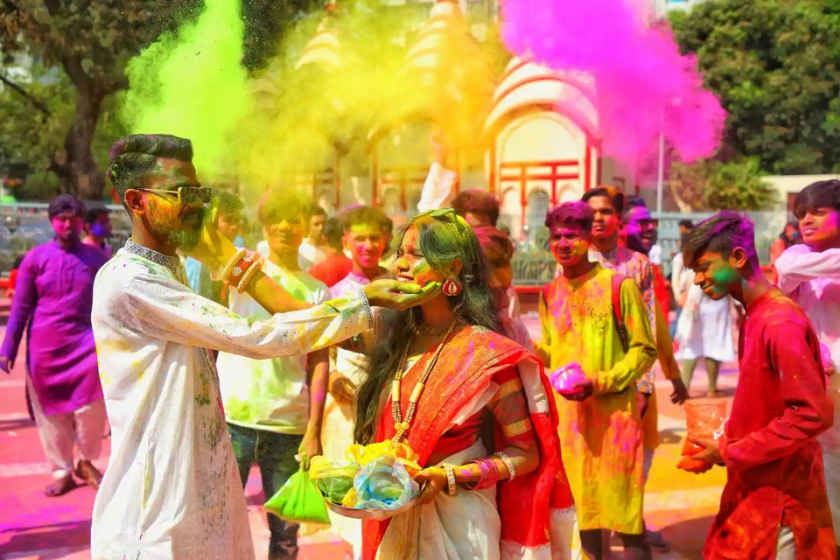
Holi is a Hindu spring festival in India and Nepal, also known as the festival of colors or the festival of sharing love.
Millions of Hindus in India and around the world celebrate Holi to mark the beginning of Spring in hopes of a bountiful harvest, celebrating the victory of good over evil.
Holi is usually divided into two days, called Jalanewali Holi and Rangwali Holi. Traditionally, Jalanewali Holi is a day when friends and family gather after sunset, light bonfires, and even throw grains, popcorn, and green peas into the fire in rituals. Rangwali Holi is the second day, where people throw colored powder and water. The festival is based on Hindu mythology and has great cultural significance for Indians. They consider Holi to be a symbol of new beginnings and a time to mend relationships and start afresh.

This is one of the important festivals of India, as well as many countries with Hindu communities.
Some parts of India celebrate the festival on a grand scale. People dance, sing and feast on traditional foods. Schools are closed, and children and adults spend the day celebrating the festival. Some cities, such as Vrindavan and Mathura in the northern Indian state of Uttar Pradesh, celebrate the festival with great fanfare. In the days leading up to the festival, the streets are filled with stalls selling colored powders, toy guns and other festival-related items.
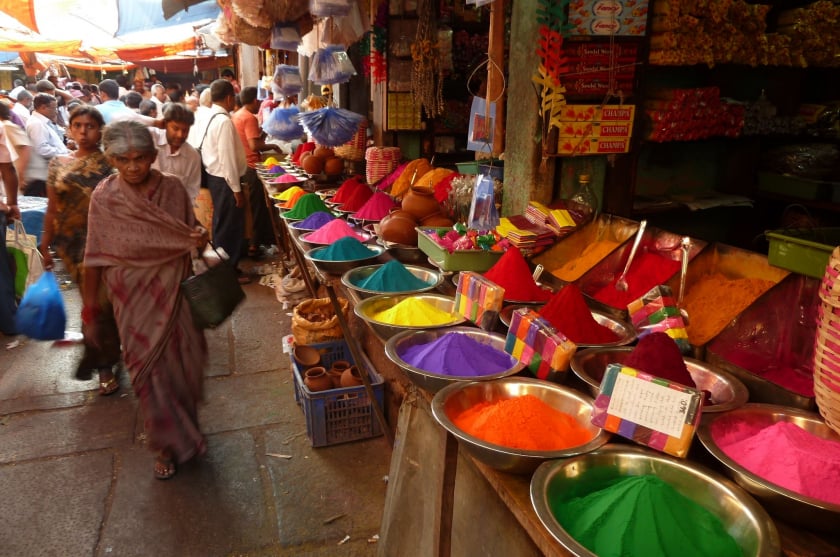
Traditionally, these colors are blended from natural plants like saffron, sandalwood and rose, so they can be easily washed off.
About two days before the festival, colored powders are sold in the central markets. Traditionally, these colors are made from natural plants such as saffron, sandalwood and rose, so they can be easily washed off.
The day before the festival, people started the festival with a small parade around the market. In addition to the statues of the gods carried on horse-drawn carriages, there were also many people dressed up beautifully in colorful costumes. At night, everywhere from small alleys to main roads, people drew a circle with colored powder and piled up firewood and flowers to burn, and began to dance, sing, and gather.
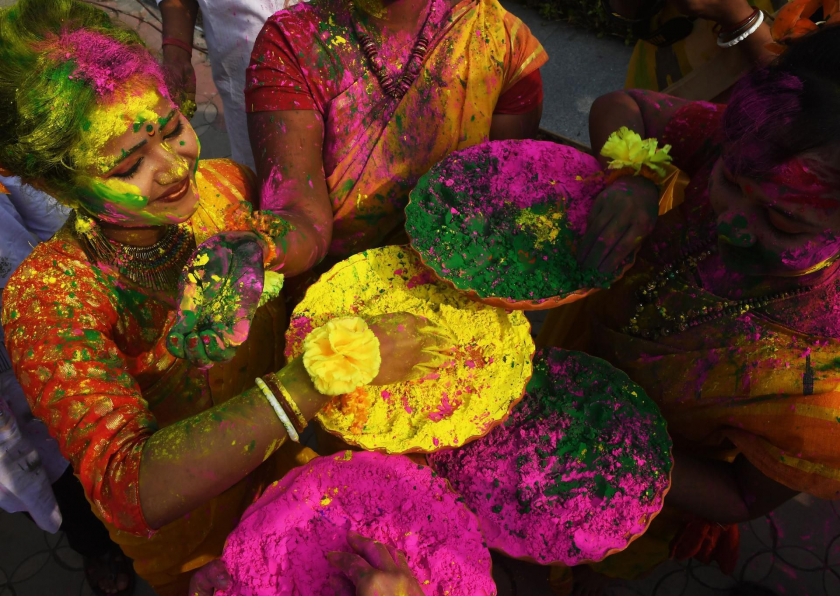
These colors are blended from natural plants.
Before entering the Holi Festival, everyone holds dry colored powder or colored liquid balls in their hands to throw and spray colors on others. By the end of the morning, everyone looks like a colorful picture. And that is the reason why Holi is also called the festival of colors.
People gather in groups to sing and dance to the beat of drums and dholak. During the pauses in the “war of colors”, people feast on gujiya, mathri, malpuas and other traditional dishes. Bhang, a drink made from local herbs, is also an integral part of Holi.
After a day of playing with colors, people take a bath and wear new clothes to welcome friends and relatives who come to visit.

This year's Holi festival is held on March 8.
Each color of powder used in Holi has a different meaning. Red symbolizes love and fertility, green marks new beginnings, yellow is considered the color of happiness and peace. Blue is the color of calmness, pink means good health, orange is a sign of courage and purple brings peace and wisdom. People usually avoid using white and black powder, as white is mainly used in funerals and black is associated with negativity and darkness.
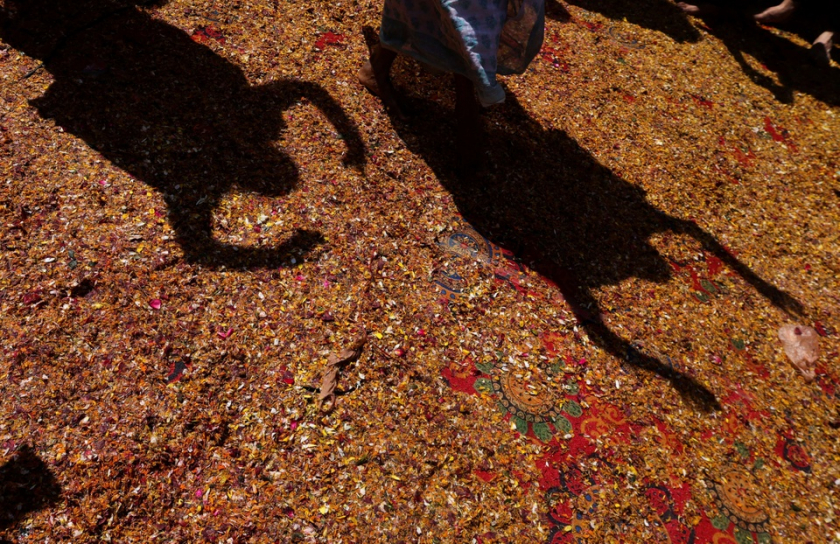
The festival is based on Hindu legend and has great cultural significance to the people of India.
Holi festival is considered a ritual with many cultural beliefs. There are 2 traditional rituals before officially entering the festival.
The first step is to prepare the Holika pyre. Days before the festival, people start collecting wood and other flammable materials for bonfires in parks, community centers, temple areas and other open spaces. On the pyre is an effigy representing Holika, who tricked Prahalad into the fire. In the houses, women prepare traditional dishes like gujiya, mathri, malpuas and many other delicacies for the festival.
The second is Holika Dahan. On the eve of the festival, usually at or after sunset, people gather together and light pyres. This ritual is called Holika Dahan. It symbolizes the victory of good over evil. People sing and dance merrily around the fire.

Some parts of India celebrate the festival on a grand scale. People dance, sing and feast on traditional foods. Schools close as children and adults spend the day celebrating the festival.
Holi is celebrated all over New Delhi and other parts of India like West Bengal, Mathura or Vrindavan, but the most special one is New Delhi.
What to note when participating in Holi Festival
You should wear white clothes and flip-flops when attending the festival so you can move comfortably. Besides, to avoid the dye powder sticking to your hair, you can apply a layer of coconut oil to your hair to limit it. Combining a bandana will make you stand out more in the crowd.
Don’t forget to apply moisturizer before going out, wear sunglasses to protect your eyes. You should also leave valuables in the hotel room, if you need to bring them, be careful when taking them out to use.
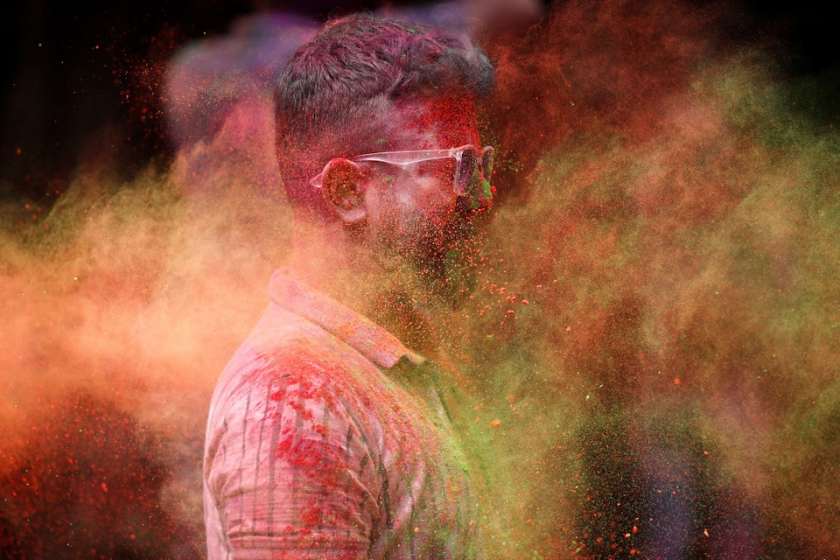
Each color in Holi Festival has a different meaning.
For electronic devices such as phones, cameras, etc., you should put them in a nylon bag or a specialized protective bag to avoid damage from powder and water (because some locals like to splash water on you).
Holi is not an event that gathers thousands of people to throw colors together in one place, but people have fun together scattered throughout the small streets, so you have to take the trouble to find it.
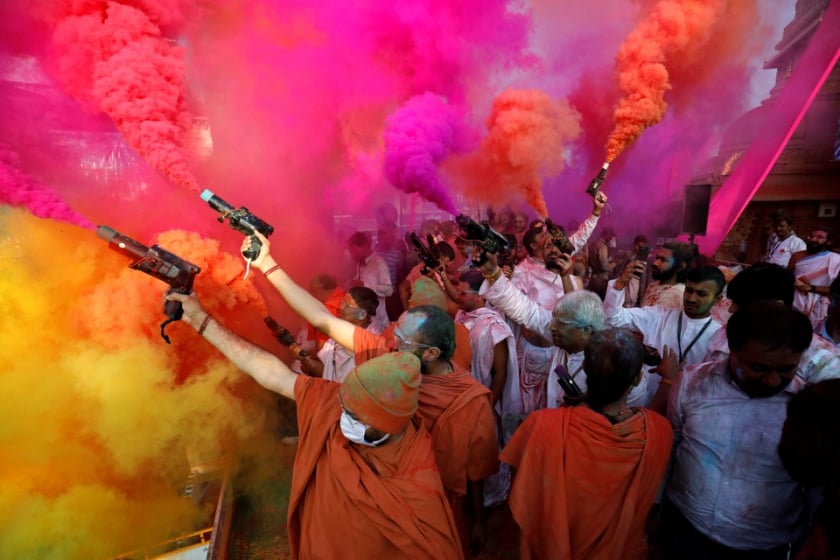
Visitors should avoid getting the colored powder into their eyes, nose, and mouth. Oil can be applied to the body to prevent the color from adhering to the skin.
If you are a woman, you should wear modest clothing that is not tight-fitting or exposes sensitive parts, which will avoid attracting attention. You should avoid foods and drinks containing bhang (an edible preparation of cannabis originating from the Indian subcontinent, often included in drinks at major festivals), especially if you are not used to it. When using it, make sure you control yourself and know when to stop.
The best time to return to your hotel is in the afternoon. Some hotels and tours organize Holi celebrations, which can be a way to enjoy the festival in a safe and secure environment.



































